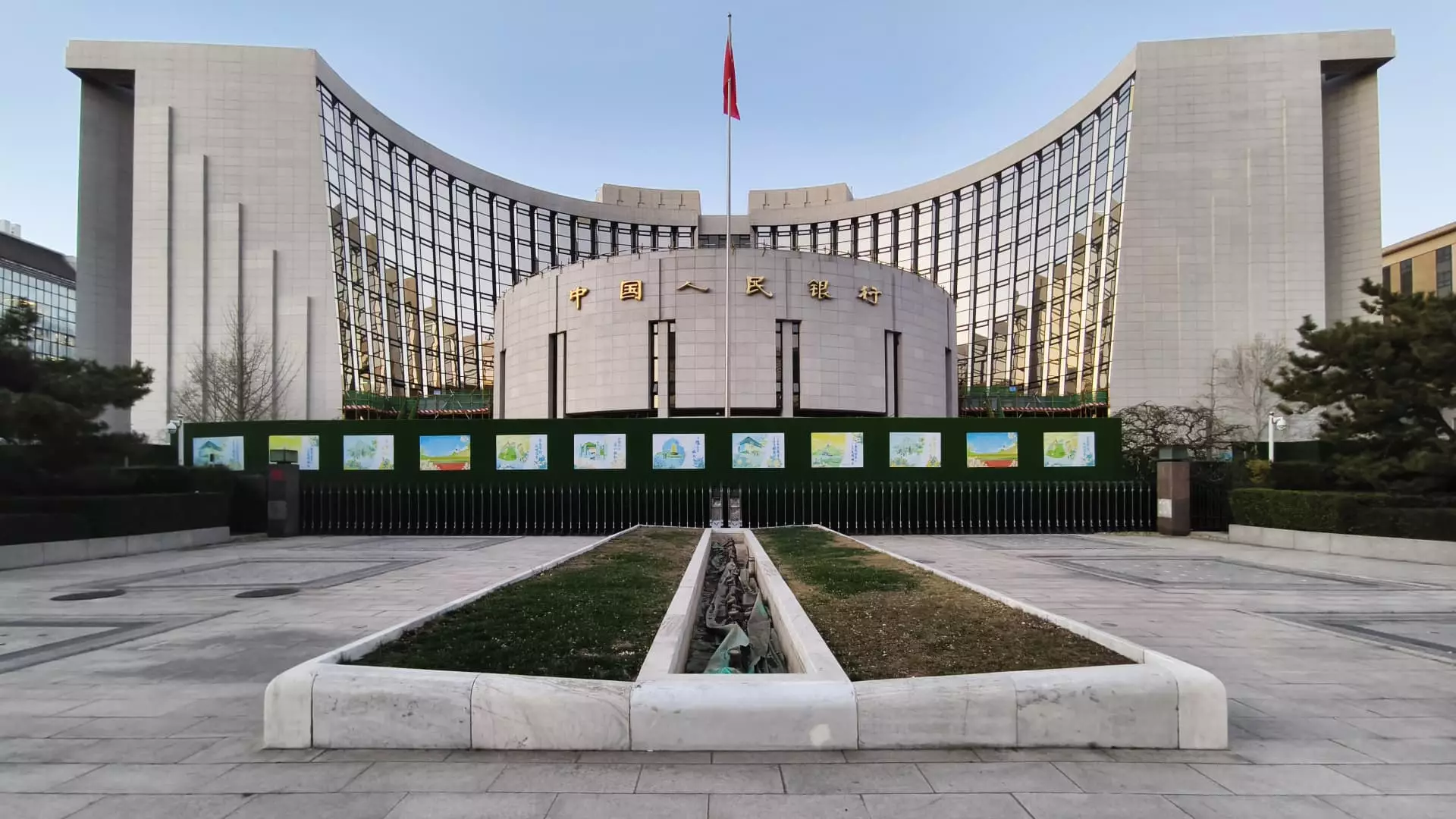On Friday, China’s central bank, the People’s Bank of China (PBOC), opted to keep its main benchmark lending rates steady, with the one-year loan prime rate (LPR) remaining at 3.1% and the five-year LPR at 3.6%. This decision is emblematic of the delicate balancing act that Beijing is currently navigating: fostering economic growth while managing a weakening currency, the yuan. The significance of the one-year LPR extends beyond corporate financing; it also impacts household loans, while the five-year counterpart is pivotal for mortgage rates, making this monetary policy choice crucial for a broad swath of the economy.
The announcement of unchanged rates was in line with expectations from a poll of economists, reflecting a consensus view amid uncertain economic conditions. Notably, this decision followed a rate cut by the U.S. Federal Reserve just days earlier, which reduced its rates by 25 basis points and suggested a moderated approach to future cuts. This context is critical, as shifts in U.S. monetary policy often reverberate through global markets and can exert downward pressure on the yuan, a challenge that the PBOC seems to be managing with caution.
The PBOC’s strategy of maintaining rates despite external pressures raises pertinent questions about its long-term approach to currency management. Analysts like Farzin Azarm from Mizuho Americas argue that the central bank is adopting a wait-and-see attitude, allowing market forces to dictate the currency’s trajectory. This perspective suggests a departure from previous interventions aimed at defending the yuan. The rationale appears grounded in the realization that the broader economic landscape—and particularly U.S. interest rates—will significantly influence the yuan’s value.
Azarm’s insights highlight a critical juncture for Chinese monetary policy, where the focus may be shifting from active currency defense to broader economic indicators. The backdrop of trade tensions, particularly in light of potential tariffs from the U.S., introduces additional complexities. Investment banks have forecasted a continuing weakening of the yuan, arguing that these external pressures will persist and complicate the PBOC’s monetary maneuvering in the coming year.
Despite the PBOC’s reluctance to lower rates further, there is a strong belief among analysts that a more aggressive fiscal approach may be warranted. Recently, top Chinese officials have advocated for increased monetary easing, but many agree that fiscal policy will play a more pivotal role in revitalizing the economy. The acknowledgment of entrenched deflation and lackluster consumer demand illustrates the persistent economic malaise that has gripped China, compounded by a struggling property market.
Yan Wang, a strategist at Alpine Macro, emphasizes the potential for the PBOC to react by cutting rates to counter deflationary pressures imposed by a weakening yuan. However, he also asserts that fiscal measures—such as government spending and investment initiatives—are poised to take center stage in stimulating growth. This dual approach underscores the necessity of a cohesive strategy that combines monetary policy with substantial fiscal initiatives to restore confidence among consumers and investors.
As China grapples with these economic challenges, the outlook remains uncertain. The news of unchanged interest rates, coupled with the anticipated weakening of the yuan, paints a picture of a nation in transition, wrestling with external and internal pressures. While the PBOC retains some flexibility in monetary policy, the focus on fiscal interventions indicates a recognition that the road ahead may require more than just rate adjustments to navigate the complexities of the global economy.
China’s current economic landscape reveals a nuanced interplay between monetary and fiscal policies. While the PBOC’s decision to hold rates steady signals a cautious approach, the pressing need for economic revitalization may force a reevaluation of strategies in the face of a changing global environment. The coming months will be critical, not only for China’s domestic policies but also for how effectively the nation can maneuver through the currents of global economic dynamics.

